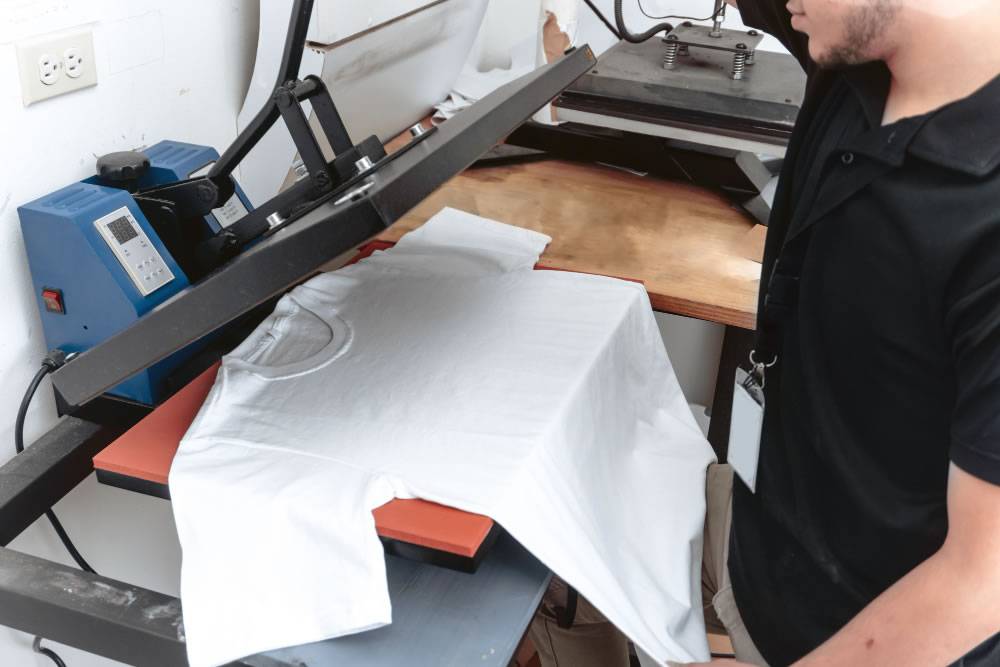8 Tips for Printing High-Quality Custom T-Shirts
- 16-02-2025
- Business
- collaborative post
- Photo Credit: Freepik
Custom t-shirt printing is an excellent way to create unique apparel for businesses, events, or personal use. However, achieving high-quality results requires careful planning, the right materials, and proper printing techniques.
Whether you're new to t-shirt printing or looking to improve your results, this article provides eight essential tips that will help ensure professional-looking designs with lasting quality.
1. CHOOSE THE RIGHT FABRIC
Take note that the fabric choice affects print quality. Cotton is popular because it absorbs ink well, creating vibrant and lasting prints. Different cotton types have different quality levels. Ring spun cotton is softer with a smoother surface for printing, while standard cotton is more affordable but may not hold details as well. For a premium feel, cotton-polyester blends add durability and resist shrinking.
2. USE HIGH-RESOLUTION DESIGNS
Low-resolution images can appear pixelated or blurry when printed on fabric. To avoid this issue, ensure the design is at least 300 DPI (dots per inch) and in vector format whenever possible. Vector graphics allow for scalability without losing image quality, making these ideal for professional prints. If using raster images, make sure the images are large enough to maintain clarity at the intended print size.
When working with lower-resolution source files, an image enhancer tool can be utilized to optimise resolution and minimise artefacts prior to production.
3. SELECT THE BEST PRINTING METHOD
Screen printing is great for large orders and simple designs because it provides bright colours and lasts long. Direct-to-garment (DTG) printing is best for detailed, full-colour designs since it prints onto fabric like an inkjet printer. Heat transfer printing is a budget-friendly option for small batches but may not last as long. Knowing the strengths and limits of each method helps in making the best choice for a project.
4. PREPARE THE T-SHIRT PROPERLY
Proper preparation of the t-shirt before printing ensures better adhesion of the ink and prevents issues like fading. Pre-washing the fabric removes any chemicals or residues that may interfere with ink absorption. Making sure the t-shirt is completely dry and smooth before printing will help achieve an even and professional-looking print. Using iron to remove wrinkles can also improve the final result.
5. OPTIMIZE THE PRINTING ENVIRONMENT
Always remember that environmental factors impact print quality. Humidity, temperature, and dust affect ink absorption and drying. A clean, climate-controlled workspace helps maintain consistent results. For screen printing or DTG printing, follow manufacturer recommendations for drying time and temperature. Furthermore, improper curing causes prints to fade or wash out quickly.
6. TEST BEFORE FULL PRODUCTION
Running test prints before mass production saves time, money, and materials. Testing helps find issues like incorrect colours, misaligned designs, or ink bleeding before making a large batch. Printing a sample on a similar fabric helps check quality and make needed changes. For screen printing, check that screens are aligned and ink is applied evenly. For DTG printing, confirm that the colours and details look correct.
7. UTILIZE PROPER CURING AND DRYING TECHNIQUES
In screen printing, the ink must be properly cured using a heat press or conveyor dryer at the recommended temperature. If the ink is not fully cured, it may crack or peel after a few washes. For DTG printing, using a heat press or a commercial-grade dryer ensures that the ink bonds effectively to the fabric. Avoid using household irons for curing, as these may not provide even heat distribution.
8. FOLLOW PROPER WASHING AND CARE INSTRUCTIONS
Even the highest-quality prints can fade without proper care. Providing washing instructions with custom t-shirts helps maintain quality. Wash in cold water, turn inside out to protect the design, and avoid harsh detergents or bleach. Dry on a low heat setting or let it air dry to keep the print looking good. Always remember that proper care extends the life of the design and keeps colours vibrant.
Precision in Every Print, Quality that Lasts!
Achieving high-quality Custom T-Shirt Printing results requires attention to detail at every step of the process. From selecting the right fabric to ensuring proper care, following these tips will produce professional and long-lasting designs. Whether you're printing for business or personal projects, investing time in preparation and execution will lead to superior results that stand the test of time.
Other articles that may interest you...
Trending
Most Read Articles
1.
Featured Videos
A Vision of Elvis Tenerife Promo
- 10-05-2025
TEAs 2025 Highlights
- 17-11-2025



























































